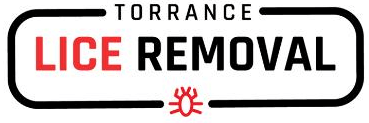Head Lice and Coily Hair
Head lice and coily hair: Signs and treatment
Head lice have difficulty gripping onto coily hair. As a result, Black people with coily hair and others with this hair type may be less susceptible to head lice.
Head Lice are small insects that live in human hair. They are not dangerous to health, but they can cause some problems, such as itching and difficulty sleeping. Head lice are also contagious and can easily spread among people in the same household or school.
Some people are less susceptible than others to getting head lice. This article discusses how head lice affect African Americans with coily hair.
Do African American people get head lice?
Share on PinterestJunior Asiama/500px/Getty Images
African American people can still get head lice. However, the CDS states that African American people get head lice much less frequently than other people. The reason for this may be that most head lice in the United States have claws that more easily grip onto uncoiled hair.
Prevalence in African American people
According to a 2018 article in the British Journal of Family Medicine, head lice affect African American people less commonly compared with other people. The researchers suggest that this is due to the shape of the claws in most head lice and the width and shape of the hair shaft in coiled hair.
The hair shaft in coily hair has an oval cross-section, whereas in other hair types, the shaft tends to be circular. Head lice find it easier to grip onto circular hair shafts.
In addition, the researchers note that the use of hair oils could also play a part. For example, petroleum jelly makes hair smoother and less brittle, which is harder for head lice to grip onto. Research has shown that African American women are likely to use more hair products than other women and to use them from a younger age.
Head lice seem to be more common in Caucasian, Hispanic, and Asian American people than in African American people. For example, fewer than 0.5% of African American schoolchildren experience head lice compared with about 10% of schoolchildren of other races. Research suggests that some head lice have adapted to living in coily hair. The researchers found head lice in four African countries: Senegal, Burundi, Rwanda, and Ethiopia.
Signs of head lice in coily hair
Signs and symptoms of head lice include:
- presence of insects that are black or gray and about 2-3 mm long with six clawed legs
- an itching or tickling sensation in the hair
- feeling or seeing movement in the hair, including crawling but not hopping or flying
- trouble sleeping, as head lice are most active when it is dark
- sores on the head from scratching, which may lead to an infection
People can also look for signs of head lice eggs. The empty egg casings may be easier to see on dark hair than the lice, as they usually appear white. Eggs are usually within 4mm of the scalp and are about .8 mm by .3 mm in size.
People can check for lice in the following areas:
- the scalp and crown of the head
- around and behind the ears
- the neckline at the back of the head
- rinsing out any excess product from the hair using a shower head or running tap
- checking anyone else in the house for head lice to prevent further spreading
- using conditioner with every hair wash, making sure to coat the ends of the hair
- using a hot oil treatment twice monthly
- applying a heat-protecting product to wet hair before styling it
- sticking with a ceramic or iron comb for pressing hair
- ensuring that braids, cornrows, or weaves are not too tight
Head lice are less common in African American people than in other people, which is likely due to the head lice struggling to grip onto coily hair. However, African American people can still get head lice and should continue checking for the problem.
The treatment for head lice is the same for people with any type of hair. It is important to check everyone in the household because head lice can spread among individuals. A person should speak with a doctor if treatments for head lice are not working.

